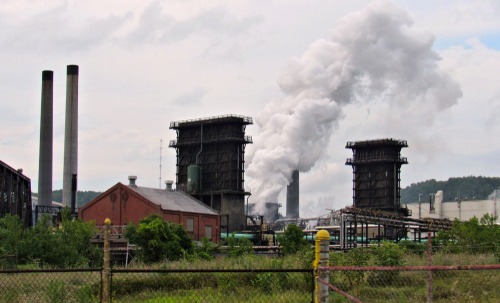
As U. S. Steel Corp. and Nippon Steel Corp. continue working through federal regulatory reviews of a pending takeover of the Pittsburgh-based company by Japan’s largest steelmaker, a new economic impact analysis says that if the deal passes muster, then Pennsylvania will reap the economic rewards.
The study released Oct. 1 assesses how the proposed $1 billion investment committed by Nippon Steel to modernize U. S. Steel’s operations in the Monongahela Valley of southwest Pennsylvania, known as the Mon Valley Works, following the closing of their pending merger would generate a significant economic impact in Pennsylvania.
“Not only will this deal secure U. S. Steel’s Pennsylvania footprint — an economic boon benefiting communities and employees — the Nippon Steel investment in Mon Valley Works facilities would cause a positive ripple effect across the Pennsylvania economy,” said U. S. Steel President and CEO David Burritt. “While the economic impact is undeniable, what is most heartening is the consequential economic and generational impact this investment will have on the families and communities of the Mon Valley.”
In August, Nippon Steel announced a post-closing capital spend commitment of no less than $1 billion to further invest in Mon Valley Works as a part of its proposed partnership with U. S. Steel, specifically to replace and/or upgrade the hot strip mill at the Pittsburgh-area Irvin Plant, along with other facilities in the Mon Valley Works.
For the purposes of the study, construction ($600 million) and equipment costs ($400 million) are separated, and it is assumed that $600 million of the $1 billion investment would be spent in Pennsylvania, according to the new economic impact analysis conducted by Parker Strategy Group.
Considering the supply chain and labor realities that would reduce in-state spending for any major construction project in the Mon Valley, the study looked at a range of spending scenarios.
For instance, according to the study, if just 80 percent of the $600 million construction project is spent in Pennsylvania, the Nippon Steel investment would generate a $952.9 million incremental economic impact over a two-year timeframe.
Among other findings, the study showed a concentrated economic impact to southwest Pennsylvania and increased impact if construction dollars are spent in the state, and predicts that when 40 percent of the investment is spent in state, it would create nearly 2,500 jobs and generate an almost half-billion-dollar economic impact over a two-year period.
When 80 percent of the project costs are spent in Pennsylvania, the impact increases dramatically, the study says, doubling the number of jobs created (4,864 jobs) and generating almost $1 billion in economic impact ($952.9 million total impact) over two years.
“The Nippon Steel investment makes possible a generational upgrade at the Mon Valley Works facilities that will only occur if the transaction closes,” said Scott Buckiso, U. S. Steel’s senior vice president and chief manufacturing officer at its North American Flat-Rolled Segment.
“With a new lease on life,” Buckiso added, “these facilities would support and sustain jobs at U. S. Steel and across the region for small businesses that depend on our continued presence in the Mon Valley.”
Nippon Steel said it plans to make its no-less-than $1 billion investment in the Mon Valley Works operations following the closing of its deal with U. S. Steel to extend the production life of integrated assets and enhance the security of steel supply to American manufacturers. The companies expect the deal to close by the end of the year.
Together with the previously announced $1.4 billion capital expenditures in the facilities covered by its basic labor agreement (BLA) with the United Steelworkers union, Nippon also said that its investments “are strong commitments to the region and union-represented facilities that go well beyond what is currently required by the BLA.”